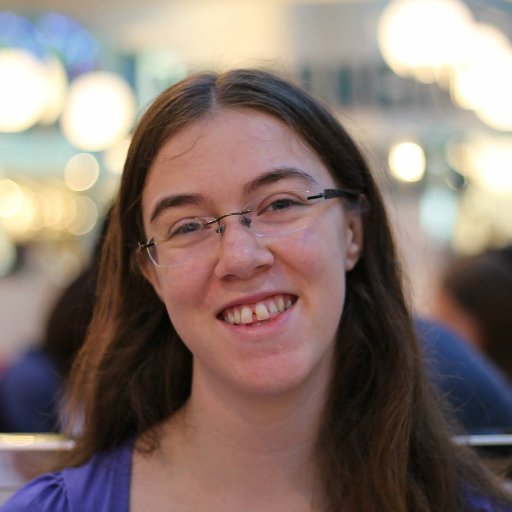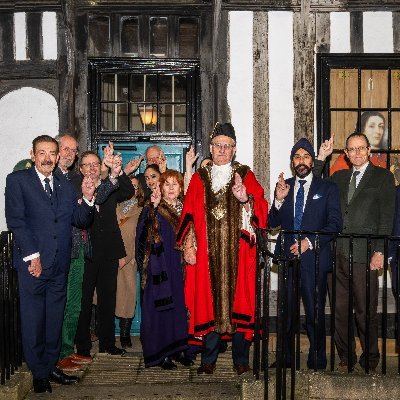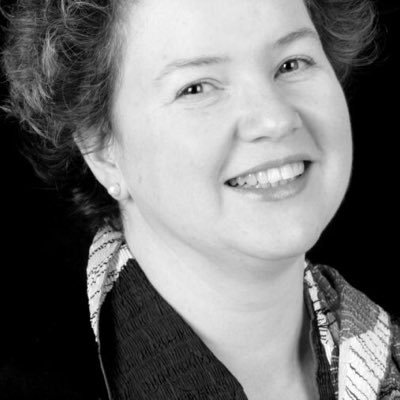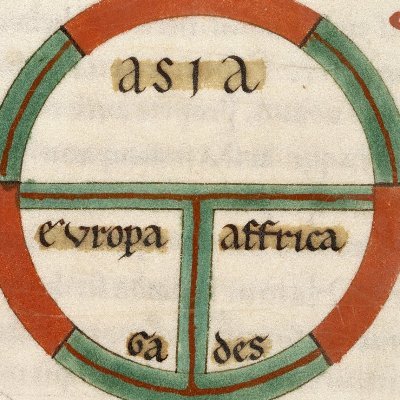
Dr Emma Brownlee
@ECBrownlee
Followers
877
Following
436
Media
183
Statuses
712
Research fellow @GirtonCollege @UCamArchaeology Early Medieval Europe | Death & Burial | GIS | Occasional Vikings She/her
Cambridge, England
Joined August 2018
New paper alert! "A radiocarbon-based model of changing burial rites in early medieval England" @14Cjournal Using big data to answer the question of what happens to grave goods in the 7th century, and more. Summary🧵 https://t.co/dxBqdv1VMv
@GirtonCollege @UCamArchaeology
cambridge.org
A RADIOCARBON-BASED MODEL OF CHANGING BURIAL RITES IN EARLY MEDIEVAL ENGLAND - Volume 65 Issue 6
2
26
77
The Humanities Writing Competition invites UK students in Year 12 to explore beyond the curriculum, inspired by the Lawrence Room museum objects. 🕰️ The competition is open now and closes on Thursday 20 March 2025. ⬇️ Find out more ↘️ https://t.co/g9KL1o1PC6
0
1
2
Published with my excellent colleagues, Alison Klevnäs, Astrid Noterman, and Cecilia Ljung (Uppsala University)!
0
0
2
Finally, even though these people had been separated from the objects they were buried with, copper staining gives some indication. Combined with the c14 dates, we can see that people were being buried with objects into the 12th and 13th centuries, later than expected 5/5
2
1
5
The population buried around these first churches were in good health, but there's some evidence of the use of teeth as tools, and some deliberately tooth filing. They were mostly female, and as they came from the north side of churches, this suggests sex segregation 4/5
1
1
3
C14 dates from each individual, corrected for marine fish consumption, show that these churchyards started to be used for burial in the first half of the 11th century, which matches historical records of Gotland's conversion. 3/5
1
1
3
We analysed antiquarian finds from around churches in Gotland. These were found by gravediggers and had been stored without much documentation, separated from the better recorded objects, but their newspaper wrappings provided some hints as to which sites they came from. 2/5
1
1
3
New publication just in time for Christmas, in Current Swedish Archaeology! Osteological analysis and c14 dating of human remains from the first churchyard burials on Gotland. 1/5 https://t.co/M6GAWmRWZZ
1
11
18
NEW Did ancient Britons scatter their ashes in rivers? Lack of burial evidence from the Iron Age until the 5th century AD suggests alternative funerary customs persisted throughout Roman occupation. 🆓 https://t.co/ge7pqSVd2p 📷 Meghan Mattsson McGinnis @ECBrownlee
1
8
23
Out now in @AntiquityJ! Looking at evidence that not everyone in early med England was buried in a cemetery, and that alternative Iron Age forms of disposal in the landscape persisted into the Roman period and beyond... https://t.co/bUfE24rLNi
cambridge.org
Where is everybody? The unburied dead in late Roman and early medieval England - Volume 98 Issue 402
1
35
87
🗓️Come and visit the Lawrence Room on Saturday 14 September from 2:00pm - 4:00pm! ➡️ https://t.co/4l3MSGuibf 🎟️Booking not required: Free to attend!
Have you ever been to visit the Lawrence Room @GirtonCollege? A hidden gem of #Cambridge, the Lawrence Room is home to Roman and Anglo-Saxon grave goods discovered on the college site as well as artefacts from ancient Egypt, Mesopotamia and Greece: https://t.co/MYjhjAX4z1
0
9
9
Great to show the exchange group from Thetford and Nagawa around the Lawrence Room museum last month!
THC Youth Group and Young Obsidian Ambassadors Cultural Exchange 2024 Day 5: Lawrence Room at @GirtonCollege Thank you to Dr Emma Brownlee for the tour. @SISJAC_UK @KTDnorfolk
0
0
2
In Rome for #EAA2024. On Friday will be chairing and speaking in session 182 on non-burial treatment of the dead. Including a sneak preview of my and Ali Klevnäs’s forthcoming @AntiquityJ paper!
0
0
27
Nice summary of old and new work on Repton's Viking army camp led by @CatJarman. Featuring @HorneSupremacy on the wider context and me on the burials @GirtonCollege @UCamArchaeology
https://t.co/f6JnNyIYEU
bbc.com
Archeologists believe a quiet spot in Derbyshire may have witnessed key moments in Britain's history.
1
11
31
🚨🥳📖 WHY ANIMALS TALK is published today in the USA! https://t.co/EMd2XeitjV Do you want to know what's really going on when animals talk? What do they have to say? And WHY? Why do some animals say very little, but others have hugely complex communication? FIND OUT HERE
8
14
47
Fascinating finds @GirtonCollege after research fellow @ECBrownlee led a re-excavation of the Roman and Anglo-Saxon burial sites uncovered by @theUL Librarian Francis Jenkinson in 1881, who wasn't too careful about what he did...
girton.cam.ac.uk
0
4
10
@UCamArchaeology I couldn't have done this without the most wonderful team of colleagues, and @GirtonCollege students and fellows. Most were new to archaeology, but you couldn't tell!
0
0
3
New excavations on the site of Girton's Roman and early medieval cemetery! We've pinned down the exact location of the site, and by re-excavating the backfill we've recovered a number of the human remains which weren't valued by antiquarians @UCamArchaeology
🔍 What lies beneath the grounds at Girton College, @Cambridge_Uni? Girton Fellow @ECBrownlee led a group of students and fellows to investigate Francis Jenkinson's 19th-century #excavation, hoping to piece together some of the missing details. https://t.co/o3yTe2SolR
1
6
34
Nice summary of my #radiocarbon study! @14Cjournal
Study reveals when burial practices changed in early medieval England - great research by @ECBrownlee
https://t.co/Xr7D5Vv0WE
#medieval #history
0
3
9











